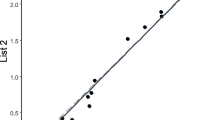Abstract
The analysis of the different varieties of language alterations from several causes has become an indicator to support tentative diagnoses, not only physical but degenerative, functional or cognitive. In this study, we explore fluency-disfluency in language of participants after suffering a traumatic brain injury. From a linguistic-computational approach, covering one-year of periodic post-recovery stages samples, candidate subsets of features were evaluated with a pool of learning methods until obtaining comparable scores to a baseline taken as the maximums achieved with the same evaluation, but on the full feature set. Starting in three-months recovery stage, this was extended to six, nine, and twelve months. After setting a global overview during this period of the fluency response based on F1-score of the learning algorithms, the identified feature was the basis to work on a model in a longitudinal sense of the disfluency-response with dichotomous global linear mixed effects model.
Supported by CONACyT and partially by SNI.
Access this chapter
Tax calculation will be finalised at checkout
Purchases are for personal use only
Similar content being viewed by others
References
Coelho, C.A., Grela, B., Corso, M., Gamble, A., Feinn, R.: Microlinguistic deficits in the narrative discourse of adults with traumatic brain injury. Brain Inj. 19(13), 1139–1145 (2005)
Elbourn, E., et al.: Discourse recovery after severe traumatic brain injury: exploring the first year. Brain Inj. 33(2), 143–159 (2019)
Fraser, K.C., et al.: Automated classification of primary progressive aphasia subtypes from narrative speech transcripts. Cortex 55, 43–60 (2014)
Fraser, K.C., Hirst, G., Graham, N.L., Meltzer, J.A., Black, S.E., Rochon, E.: Comparison of different feature sets for identification of variants in progressive aphasia. In: Workshop on Computational Linguistics and Clinical Psychology: From Linguistic Signal to Clinical Reality, Baltimore, MD, USA, 27 June 2014, pp. 17–26 (2014)
Fraser, K.C., Hirst, G., Meltzer, J.A., Mack, J.E., Thompson, C.K.: Using statistical parsing to detect agrammatic aphasia. In: Proceedings on Biomedical Natural Language Processing (BioNLP), Baltimore, MD, USA, pp. 134–142 (2014)
Gabani, K., Sherman, M., Solorio, T., Liu, Y., Bedore, L.M., Peña, E.D.: A corpus-based approach for the prediction of language impairment in monolingual English and Spanish-English bilingual children. In: The 2009 Annual Conference of the North American Chapter of the ACL (NAACL), Boulder, CO, pp. 46–55 (2009)
Hair, J.F., Jr., Fávero, L.P.: Multilevel modeling for longitudinal data: concepts and applications. RAUSP Manag. J. 54(4), 459–489 (2019)
Jorgensen, M., Togher, L.: Narrative after traumatic brain injury: a comparison of monologic and jointly-produced discourse. Brain Inj. 23(9), 727–740 (2009)
Lashley, K.S.: The problem of serial order in behavior. In: Jeffress, L.A. (ed.) Cerebral Mechanism in Behavior, pp. 112–136. Wiley, New York (1951)
MacWhinney, B.: The Childes Project: Tools for Analyzing Talk, 3rd edn. Lawrence Erlbaum Associates, Mahwah (2000)
MacWhinney, B.: Tools for analyzing talk - electronic edition part 2: the CLAN programs. Carnegie Mellon University (2020)
Peach, R.K.: The cognitive basis for sentence planning difficulties in discourse after traumatic brain injury. Am. J. Speech Lang. Pathol. 22, S285–S297 (2013)
Peintner, B., Jarrold, W., Vergyri, D., Richey, C., Gorno-Tempini, M.L., Ogar, J.: Learning diagnostic models using speech and language measures. In: 30th Annual International IEEE EMBS Conference, Vancouver, BC, Canada, pp. 20–24 (2008)
Power, E., et al.: Patterns of narrative discourse in early recovery following severe Traumatic Brain Injury. Brain Inj. 34(1), 98–109 (2020)
Rentoumi, V., et al.: Automatic detection of linguistic indicators as a means of early detection of Alzheimer’s disease and of related dementias: a computational linguistics analysis. In: 8th IEEE International Conference on Cognitive Infocommunications (CogInfoCom), pp. 11–14 (2017)
Rowley, D.A., Rogish, M., Alexander, T., Riggs, K.J.: Cognitive correlates of pragmatic language comprehension in adult traumatic brain injury: a systematic review and meta-analyses. Brain Inj. 31(12), 1564–1574 (2017)
Stubbs, E., et al.: Procedural discourse performance in adults with severe traumatic brain injury at 3 and 6 months post injury. Brain Inj. 32(2), 167–181 (2018)
TBI bank. https://tbi.talkbank.org/. Accessed 3 Mar 2021
Childes Project. https://talkbank.org/. Accessed 3 Mar 2021
Author information
Authors and Affiliations
Corresponding author
Editor information
Editors and Affiliations
Rights and permissions
Copyright information
© 2021 Springer Nature Switzerland AG
About this paper
Cite this paper
Roldán-Palacios, M., López-López, A. (2021). Disfluency as an Indicator of Cognitive-Communication Disorder Through Learning Methods. In: Mahmud, M., Kaiser, M.S., Vassanelli, S., Dai, Q., Zhong, N. (eds) Brain Informatics. BI 2021. Lecture Notes in Computer Science(), vol 12960. Springer, Cham. https://doi.org/10.1007/978-3-030-86993-9_5
Download citation
DOI: https://doi.org/10.1007/978-3-030-86993-9_5
Published:
Publisher Name: Springer, Cham
Print ISBN: 978-3-030-86992-2
Online ISBN: 978-3-030-86993-9
eBook Packages: Computer ScienceComputer Science (R0)




